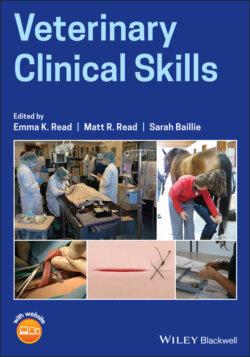Читать книгу Veterinary Clinical Skills - Группа авторов - Страница 21
Step 3: Writing Goals and Objectives
ОглавлениеGoals are a broad overview of the content to be covered and the knowledge or skill to be obtained, while objectives are specific, measurable statements that identify the who, the what, and the when of the goal. Evidently, in a clinical skills curriculum, the focus is more on the objectives, where it is important to indicate to students the expected level of competence and how it is achieved.
As stated earlier, acquiring clinical skills includes three components: learning how to perform certain movements (procedural knowledge and abilities), why one should do these (underlying basic and clinical science knowledge), and what the findings might mean (clinical reasoning). As such, clinical skills involve more than simply performing a procedure, but clinicians are often not consciously aware of the complex interplay of different parts of a clinical skill (including knowledge and decision points) that they are practicing and accordingly do not teach all these aspects to students (see Chapter 3 for more detail) (Michels et al., 2012). When designing a clinical skills curriculum, the underpinning knowledge and the interpretation of results must be included along with the procedural knowledge and practice in the curriculum and be appropriately reflected in the learning objectives used for each component.
Figure 2.2 Relationship between EPAs, nested EPAs, and clinical skills.
When writing learning objectives for clinical skills, they need to be as specific and measurable as possible and must appropriately reflect what the student “will be able to do” at the end of the learning session, with as few interpretations as possible. The verbs chosen to be used in the objective must also be relevant for each aspect of the clinical skill and reflect the learning that is hoped to be achieved. For example, if monitoring oscillometric blood pressure in a dog is a clinical skill that is expected of graduates, the following objectives could be appropriate, but may be located in different learning strategies (see Step 4).
At the end of the learning session, the student will be able to:
| Learning objective | Skill required |
|---|---|
| Identify times when it is necessary to monitor blood pressure in a dog and the equipment needed to perform this procedure | Underpinning (declarative) knowledge |
| Apply a blood pressure cuff in the correct manner to the limb of a dog and read the output | Procedural skill and knowledge |
| Interpret the results of blood pressure readings as normal or abnormal and identify the required responses to abnormal readings | Clinical reasoning |
When selecting verbs to include in learning objectives, words such as “learn,” “understand,” “know” or “appreciate” are vague, will be difficult to measure and should not be used (Schneiderhan et al., 2018). Additionally, verbs that imply recall of knowledge would not be appropriate for the objectives focused on procedural abilities e.g. “list,” “identify,” “differentiate.” Better verbs for these objectives include “execute,” “perform,” “prepare,” “calculate” etc.
